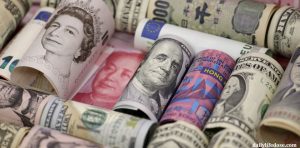The Global crisis brought a very bad effect on the world market. It was entirely impossible for countries especially in the Euro Zone to pay their government debts. For example, The Greece Depression has shaken the Euro Zone economy with its financial crisis 2007-2008. The Greek Government announced 12 rounds of taxation rise and the spending cuts and reforms from the year 2010 to 2016. With this incident, there were riots and protests all over the Greece. Read more…
But recently the Global economy is working the way it didn’t work in the last seven years. The Economists are claiming it a Global Synchronous Recovery and as per the Citi Research, all the major markets will see a global growth in the year 2017. This will be the first ever upcoming of the market since 2010. The global graph for EPS growth has shown the positive rise in the year 2017 and it will remain positive for the upcoming years.
As per the global forecast of GDP, a 3.1 percent rise for the year 2017 and will grow 3.3 for the upcoming year. The equity markets of the United States, Pan- Europe and even Japan have posted significant performance in this year with the synchronous recovery. On comparing the recent year’s performance all the major economies are steaming up together and these signs are working in favour of the bulls at the Wall Street.
A glance at the 7 years and recent changes in the top economies of the world 
United States:
There is no doubt that the US economy is the largest in the world in terms of GDP. On looking at the graph of the world economy the United States cover 24.5% of its position. On recent calculations, the US GDP will rise to 2.2 percent which is far better than the year 2016. Due to global synchronization, the unemployment rate will also drop up to 4.3 percent in the year 2017 which is a great improvement than 4.7 percent in the year 2016.
Republic of China:
China has become the manufacturing and exporting hub in the recent years. At an average, it has the economic growth was increasing annually 10% per year but recently it has slowed down. The Chinese economy is successful in bring up its major part of the population from poverty and providing employment to masses. With global synchronization, China is aiming to expand its economy up to 6.7 percent in the year 2017 and will be successful in creating 11 million urban jobs for the unemployed.
Japan:
Japan’s economy may be at the third rank but in the past seven years, it was facing downfall in terms of GDP by PPP. In the result, the positions slip to the fourth from third. The economy of Japan has shown recessionary symptoms from 2008. Through global harmonization, the Japanese economy advances up to 0.3 percent in the first quarter of 2017 which is far better than the December quarter of 2016. According to the economic analysis, the growth is slower but will rise soon in the upcoming year.
Germany:
Germany is the strongest and stable economy of Europe. The exports like machinery, automobiles, housing machinery and chemicals make it rank fourth in the world economy. But in the recent years, German Economy was facing many challenges with the economic growth. But with the start of the year 2017, the Germen Economy is pacing fast with a 0.6 percent growth in the first quarter this will surely help in expanding trade and show fall in the unemployment rate.
United Kingdom:
The UK is the fifth largest economy with a GDP of $2.65 trillion. Services is the main sector driving the UK economy but in recent years UK has face consistent downfall in the world economy and most economists assume that the loss of 2.2- 9.5% of GDP. Currently, the economic growth will stay between 1.05- 1.09% for the next recent years. It will be slowest on comparing with the last quarter growth.
France:
Being a famous travel destination France bags the sixth position in the world economy. It has a low poverty pace and very high standards of living. France is leading in its exports and imports worldwide but it faced slow growth in the recent years. Now the government is working hard to maintain its position in the global economy. In the recent forecast, the France economy advances for 0.5 percent growth for both the quarters till date. The global synchronization will raise the growth of the French economy.
India:
Recently India has become the fastest growing economy leaving back China. India may rank third in terms of GDP by PPP but it’s heavy and increasing population drags it back to the seventh position in nominal GDP. It economy highly dependent on the agriculture but the service sector has also paced in the recent years. On configuring the strengths, the Indian Economy has less dependency on exports, increasing saving rates and upcoming middle class. Recently the Indian Economy will seek a rise 7.2 percent for the year 2017-18 and the forecast says 7.7% rise in the year 2018-19.
Italy:
This country may hold eight positions in the global economy but is continuously facing debt and unemployment crisis. Its economy has seen recent growth in 2015 since 2011 and economists claim to be growing for the recent years. With the global synchronization, the business investment id strengthening in Italy and the growth is rising from 1.1 percent to 1.2 percent in the recent quarters of 2017.
Brazil:
In the recent years of recession, Brazil slipped from 7th to the 9th position in global economy. The economy does not expect any growth till 2017 and the unemployment rates are claimed to grow in this period by 11%. But in the recent quarter of 2017, the Brazilian economy is rising by 1 percent and this is a decent expansion on comparing with the previous periods.
Canada:
The Canadian Economy has shifted Russia and bagged 10th position with nominal GDP of $1.53 trillion. Its service sector and huge manufacturing have seen growth since the World War Second. With global harmonization the Canadian economy has risen by 0.9 percent in the first quarter of 2017 from 0.7 percent in the previous period.







